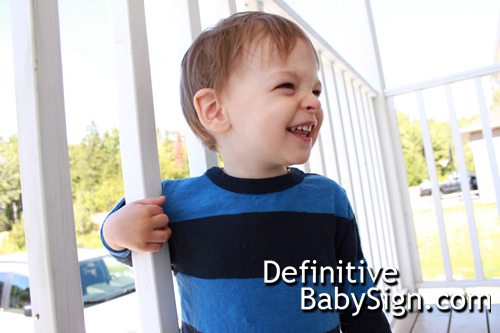 If you are anything like us, you think the real payoff to signing is in the moment – whatever moment that happens to be. To parents with a 10-12 month-old, a baby that can sign DIAPER, EAT, MILK and so forth is a God’s-send. To parents with a toddler, signing means so much more, especially one who is entering the “terrible twos” at around 16-24 months when baby has a really good grasp on the flow of life and begins to come into his own element. Suddenly, easygoing basic needs baby, turns into demanding and needy toddler who can not be so easily pleased.
If you are anything like us, you think the real payoff to signing is in the moment – whatever moment that happens to be. To parents with a 10-12 month-old, a baby that can sign DIAPER, EAT, MILK and so forth is a God’s-send. To parents with a toddler, signing means so much more, especially one who is entering the “terrible twos” at around 16-24 months when baby has a really good grasp on the flow of life and begins to come into his own element. Suddenly, easygoing basic needs baby, turns into demanding and needy toddler who can not be so easily pleased.
This is really the time when signs take front stage. I remember constantly having to insist that signs be used in lieu of whining. It was as if he thought we could suddenly read his mind and that his demands could be conveyed through rudimentary forms. We never did cave to a single demand he made while whining. In fact, it would only prompt us to inquire further. We’d ask him what he wanted, and then remind him to use his signs. In fact, this became a common daily occurrence. When he asked nicely using proper address, we were generally happy to oblige given we weren’t too busy. If we were but were otherwise happy to assist, we’d instruct him to WAIT, by doing the sign. Other times we’d even say “no” outright. This was the case if his demands were inappropriate. When we did, we always offered him a reasonable explanation. With time, his whining diminished, but like all (almost?) toddlers it’s innate so it persisted. We really wanted to teach our baby that whining was not a proper way to ask for things so we never rewarded it directly. It likely comes as a big surprise (a shock?) to a lot of children that “no” is a common occurrence in life. How many adults do you know who get everything they want?
